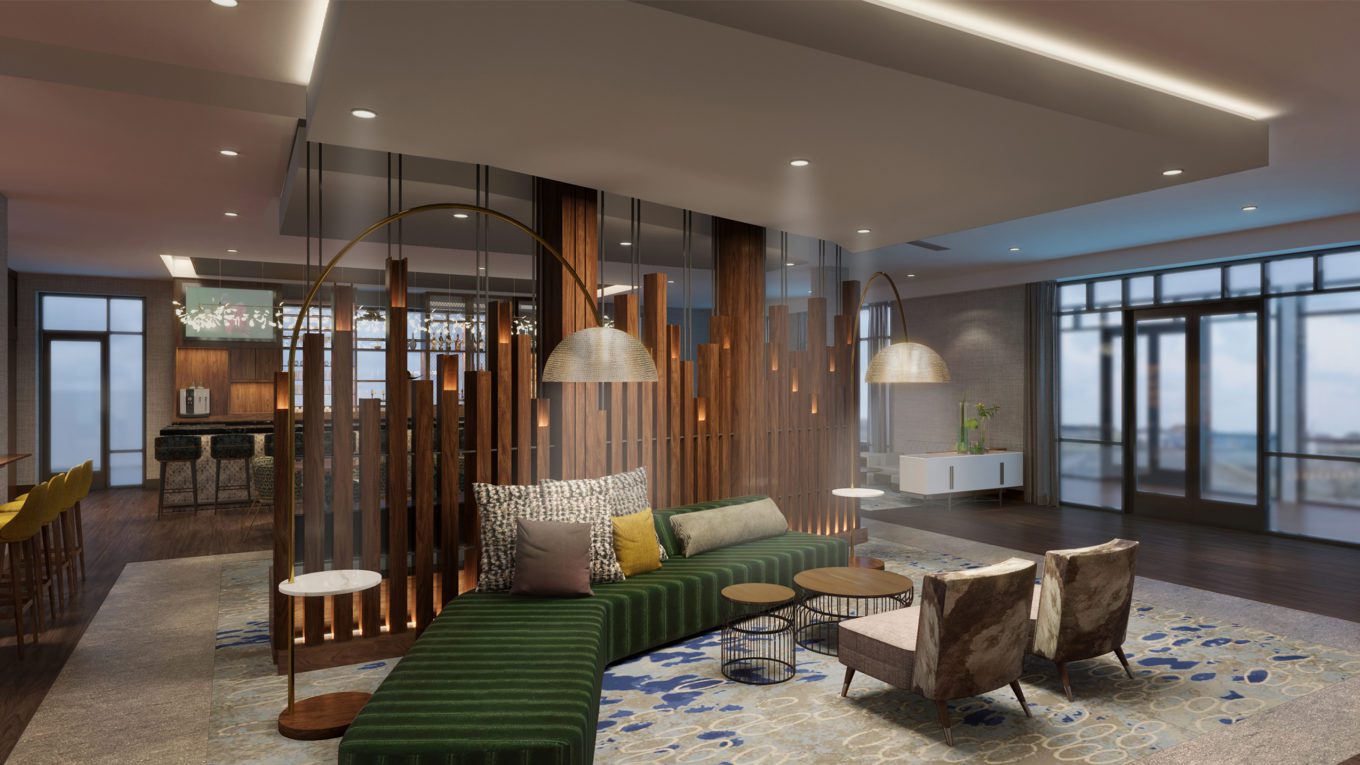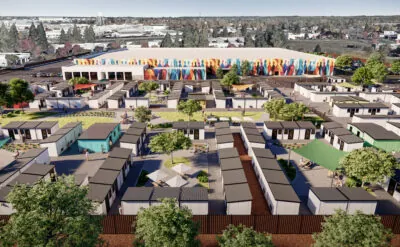In 2020, hotels either operated at a fraction of their capacity, converted to other uses, or shut their doors for good. Yet with hope on the horizon, hoteliers are exploring how design can help capture the trust and interest of future guests. Lessons learned about health, safety and technology during the pandemic are shaping the way the hospitality industry is preparing for recovery.
What does personalization look like in the future guest room? How can the spectrum of large brands and boutique hotels create a hyper-local experience? How do we satisfy the expectations of the upcoming generation of guests who value sustainable design? To answer these questions and consider how design can help the Hospitality sector move forward, Peter Dubin, Vice President hosted a roundtable with integrated team members in Hospitality.
The pandemic has accelerated our dependency on technology at home. How is design accounting for that need on the road?
Peter Dubin, Vice President
The guest room is in a state of evolution. People want to experience the same comfort and connectivity of their living room when they travel. That means designing spaces that incorporate smart technology like streaming devices and interactive mirrors that can give you the latest news and weather before you start your day. People need to feel connected not just to their friends and family, but to their coworkers. As work-life boundaries continue to shift, the idea of “Bleisure” (mixing business and leisure) trips are growing. Guests need to be fully plugged in and that starts in their room.
Mohan Srinivasan, Principal
Touchless technology is here to stay. Keyless entry, voice-activated smart hubs, QR-coded menus and even germ-killing robots are just some of the ways design can play a role in a contactless experience. The pandemic has forced the hospitality industry to react with stricter safety and hygiene protocols like cleanliness certifications and sanitized arrivals. What was once an afterthought is now a marketing tool for hoteliers that want to offer safe and healthy stays.
How can design help satisfy the growing need for an experience when people travel?
Peter Dubin, Vice President
There is a renewed commitment to the hyper-local design. Guests are looking for a unique offer and an immersive experience and design plays a large role in that decision. At one hotel we designed, we proposed that all the artwork be created by a local artist, including unique takeaways like coffee table books, sharing their artwork. Designing memorable moments can elevate a person’s stay and create a bond that keeps them coming back. The automatic connection with local restaurants and cultural experiences brings comfort and a unique human touch that is key for designers to capture the authenticity of a specific place.
Peter Dubin, Vice President
The extended stay hotel is making the home environment transportable. Visitors now have access to a place to live and work while enjoying a hyper-local experience over a longer period. Designing these places to work in conjunction with their surroundings whether it be a long beach stay or two weeks on a ski hill can incentivize people to stay. As companies like Airbnb and Sonder continue to disrupt the market, traditional hoteliers will need to adjust their designs to attract a new generation that is searching for a unique experience.
Carlos Gonçalves, Principal, Commercial, North America
Going forward, there will be greater attention committed to the well-being and safety of the experienced traveler (small groups of travelers that have focused itineraries with immersive experiences). As a result of the pandemic, there is a growing interest in single-residency accommodations for the experienced traveler that are great for family, friends and small groups. These accommodations, whether they are stand-alone, are set within resort grounds or taking over large plates of a hotel, including adjoining rooms or assignment of hotel wings or floors. The outcome focuses on providing a holistic, exclusive and ultimately safe environment.
The design objective is to create environments that are wholly supportive of worry-free relaxed stays and itineraries while not giving up local, authentic, immersive and unique experiences.
Sustainability and access to nature are key selling points for future guests. How can design help capture the interests of Gen Z?
Peter Dubin, Vice President
People are craving a connection to the outdoors, and as designers, we can help. Merging indoor and outdoor space with water features, biophilic elements and different auditory zones can help recreate experiences with nature like walking under a forest canopy. The rise in popularity of “glamping” (a glamorous style of camping) is a prime example of people’s desire to stay connected to the outdoors, and those design elements can be incorporated in hotels.
Peter Dubin, Vice President
That connection to nature is related to wanting a healthier and eco-friendly environment. There are some branded hotels we are designing where the entire brand is centered around the hotel being eco-friendly, green, and linked to nature. The priorities of Gen Z are focused on a sustainable stay, ethical purchases and healthy food alternatives and our designs are starting to reflect that as clients shift to servicing a new generation.
Doug Lang, Vice President
We have been observing the shift in consumer choices towards eco-friendly products for a generation, whether it is the business traveler or family vacationers. Sustainable travel is no longer a niche market and consumers are making holistic choices that extend from their choice of airline and lodging to responsible interaction with the local population and the natural environment. As hotel and resort designers, we are seeing the operators and large brands embrace this philosophy through their broad spectrum of partnerships that extend from tour operators to waste management.



